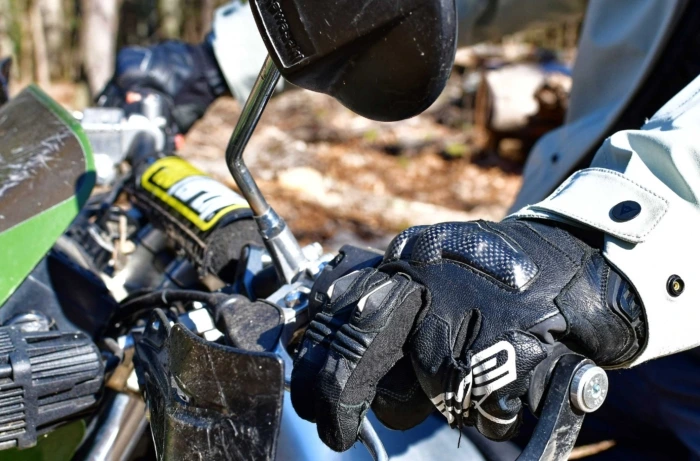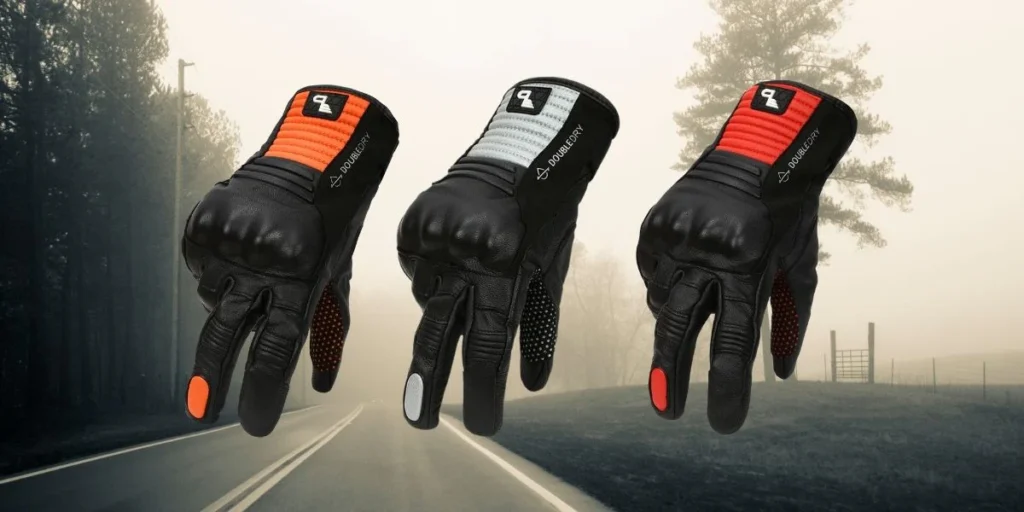Blog
10 Tips for Choosing Motorcycle Riding Gloves

Finding the right motorcycle riding gloves can be tricky, but the right choice will keep your hands safe, comfortable, and in control.
In this guide, you will learn practical tips for choosing gloves that protect you, improve your grip, and suit your riding style.
Let’s explore the 10 most important tips for choosing motorcycle riding gloves and make sure you ride with both style and safety.
10 Tips for Choosing Motorcycle Riding Gloves
1. Understand Why Motorcycle Gloves Matter
Gloves are more than just an accessory. They are essential for:
- Protecting hands from impact and abrasion
- Keeping grip steady in wet or dry conditions
- Reducing vibration and hand fatigue
Motorcycle gloves are designed with features that regular gloves do not have. Knowing their purpose will help you choose better.
2. Pick the Right Size and Fit
A good fit is the foundation of safety and comfort.
- Gloves should feel snug but not tight
- Fingers should reach the end without extra space
- Ensure easy hand movement without stretching fabric
Tip: Try on gloves with your hands in a riding position to check comfort.
3. Choose Gloves for Your Riding Style
Different riders need different gloves:
- Sport riders: Look for high-protection, armored gloves
- Touring riders: Choose comfort, padding, and breathability
- Off-road riders: Go for flexible, lightweight designs with dust protection
Now that you know the fit and style, let’s talk about the materials.
4. Select the Right Material
The material decides durability and comfort.
- Leather: Strong and abrasion-resistant, ideal for high-speed riding
- Textile: Lightweight, breathable, and often waterproof
- Hybrid: Combines leather protection with textile comfort
Tip: For year-round use, consider gloves with both leather and textile panels.
5. Check the Protection Level
Look for protective features in key areas:
- Hard knuckle guards
- Reinforced palm panels
- Finger joint padding
Why: These features help prevent serious injuries in accidents.
6. Think About Weather Conditions
Gloves should match the season:
- Summer gloves: Ventilated and breathable
- Winter gloves: Insulated, waterproof, and windproof
- All-season gloves: Removable liners and adjustable ventilation
Tip: If you ride all year, owning both summer and winter gloves is the best choice.

7. Pay Attention to Grip and Control
The right gloves improve your control of the bike.
- Palm grip textures prevent slipping
- Flexible panels improve throttle feel
- Avoid bulky designs that limit finger movement
8. Look for Comfort Features
Comfort matters on long rides:
- Soft inner lining
- Adjustable wrist straps
- Pre-curved fingers for natural grip
A comfortable glove means fewer distractions while riding.
9. Check for Certification and Safety Standards
Look for gloves that meet CE safety certification.
- CE Level 1: Basic impact protection
- CE Level 2: Higher protection for racing and high-speed use
This ensures the gloves have been tested for impact, abrasion, and tear resistance.
10. Test Before You Buy
Whenever possible, try the gloves before buying:
- Check fit with riding posture
- Test flexibility by holding handlebars
- Confirm that closures and straps are easy to adjust
Conclusion
The right motorcycle gloves keep you safe, comfortable, and confident on every ride. By following these 10 tips for choosing motorcycle riding gloves, you can invest in a pair that will serve you well for years.
Read More Caring Tips for Motorcycle Gloves
FAQs
1. How often should I replace motorcycle riding gloves?
Replace them when you notice wear, reduced grip, or damage to protective areas.
2. Are leather gloves better than textile gloves?
Leather offers better abrasion protection, while textile is lighter and often waterproof.
3. Can I use the same gloves for summer and winter?
Yes, but for best comfort, it is better to own separate pairs for diff

